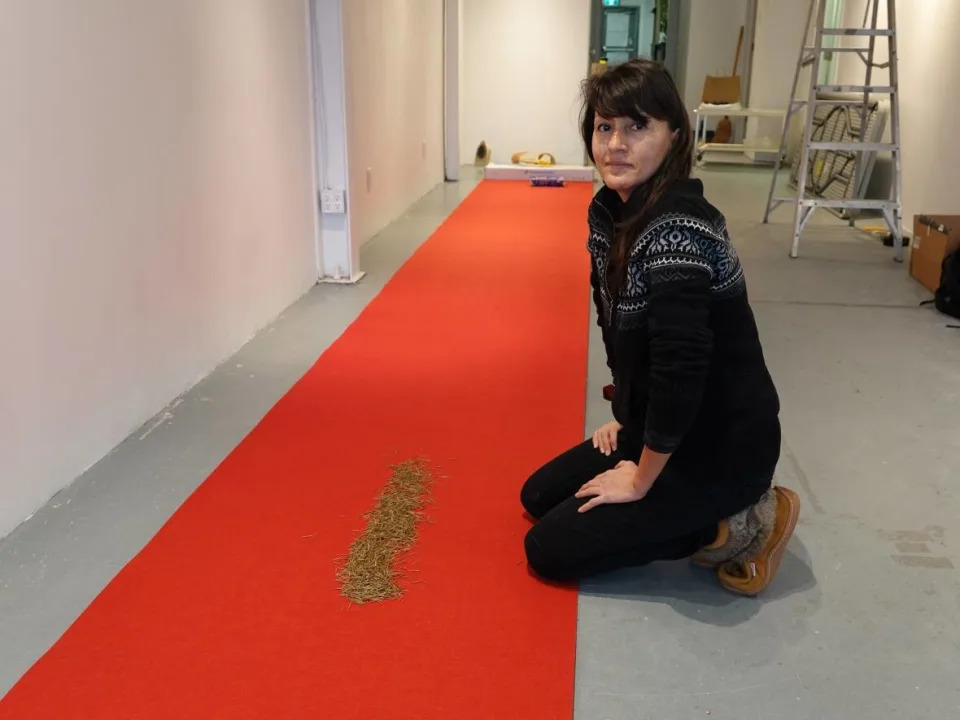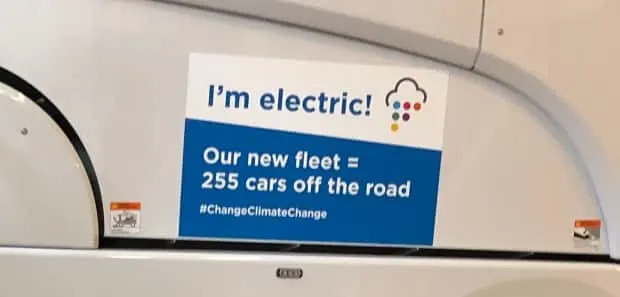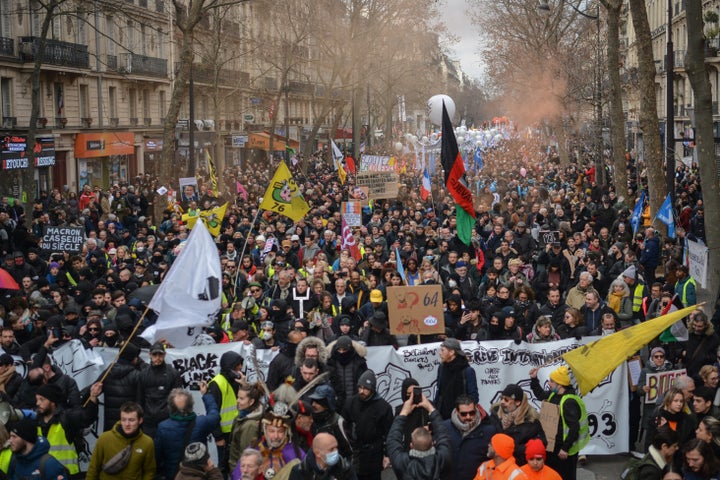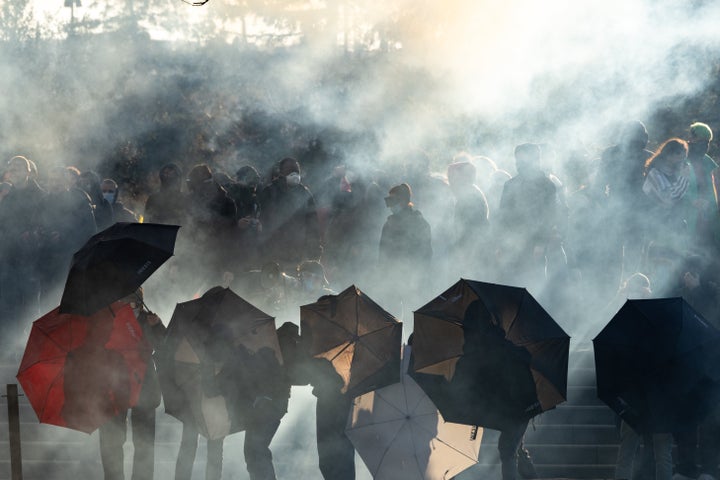Twenty years ago, the Gujarat genocide happened. The victims were the state’s Muslim minorities who were denied any protection by the state police. The Hindu organizations responsible for planning and executing the genocide are the Vishwa Hindu Parishad (VHP), the Bajrang Dal, and the Rashtriya Swayamsevak Sangh (RSS), which along with the Bharatiya Janata Party (BJP) collectively form the Sangh Parivar.
I share below some background information on these parties which will help our readers to better grasp the problem discussed.
The RSS was founded in the city of Nagpur in 1925 by Keshav Baliram Hedgewar with the mission of creating a Hindu state. Since its founding, it has propagated a militant form of Hindu nationalism, called Hindutva, which it promotes as the sole basis for national identity in India. Western thought and civilization are perceived as enemies of Hindu culture. Religions such as Islam and Christianity are seen as the religions of foreign invaders―the Mughals and the British. The RSS wanted “the entire gamut of social life” to be designed “on the rock bed of Hindu nationalism,” a goal that inspired the creation of RSS political, social, and educational wings, a family of organizations that is now referred to collectively as the Sangh Parivar.
The VHP was formed in 1964 to cover the social aspects of RSS activities. The VHP organizes and communicates the RSS message to Hindus living outside India and holds conferences for Hindu religious leaders from all over the country. The most publicized of the VHP’s activities was its campaign to build a temple to the Hindu god Ram at the site of the Babri Masjid, a historic mosque named after the founder of the Mughal dynasty, Emperor Zahir-ud-Din Muhammad Babur (1483-1530 CE), in the city of Ayodhya in Uttar Pradesh. On December 6, 1992, the mosque was demolished by members of the VHP, the Bajrang Dal, and RSS-trained cadres. The police did not intervene. The incident sparked violence around the country in which thousands of Muslims were killed. Since then, the VHP has also organized a program to reconvert those who had converted from Hinduism to other faiths (e.g., Christianity and Islam).
The Bajrang Dal is the militant youth wing of the VHP. It was formed in 1984 during the Babri Masjid conflict, in order to mobilize youth for the Ayodhya campaign. Unlike other organizations affiliated to the RSS, the Bajrang Dal is not directly controlled by the Sangh Parivar. With its loose organizational structure, it initially operated under different names in different states. Its activists are believed to be involved in many acts of violence carried out by Hindutva organizations, including the spate of attacks against the Christian community in India that began in 1998.
The Jana Sangh Party was formed in 1951 by Syama Prasad Mukherjee as the political wing of the RSS. It was later replaced by the BJP in 1980 under the leadership of Atal Bihari Vajpayee. The BJP and its allies continue at the national level and in various states to implement Hindutvadi agenda for the “Hinduization” of education, mandating Hindu prayers in certain state-sponsored schools and revising history books to include what amounts to spread hatredagainst Islamic and Christian communities.
The campaign to build a Ram temple at the site of the Babri Masjid in Ayodhya, which was hugely successful in cultivating a national Hindu vote bank, catapulted the BJP into power in the early 1990s. A 2009 report, authored by Justice Manmohan Singh Liberhan, found that 68 people were responsible for the demolition of the Babri Mosque, mostly leaders from the BJP, which included Vajpayee, L.K. Advani, and Murli Manohar Joshi. The report also criticized Kalyan Singh, Chief Minister of Uttar Pradesh during the planned demolition. He was accused of posting bureaucrats and police officers who would stay silent during the demolition.
In 2002, the BJP was heading India’s coalition government, along with twenty-one other parties that collectively formed the National Democratic Alliance (NDA). Although the BJP had then suffered electoral setbacks at the state level it still controlled the state legislature in Gujarat.
The state of Gujarat has long been known as a Hindutva lab (since at least 1995). During the BJP rule, since 1998 all the branches of the state government were packed with people from the Sangh Parivar. Importance was given to the cadres from the Sangh Parivar to dominate the numerous advisory committees at the district and taluka levels, including the Police Advisory Committee, the Social Justice Committee and others wielding enormous powers in the appointment and transfer of Government officials. According to an article in the Telegraph, not a single IPS [Indian Police Service] officer from the minority community was assigned a “field posting”. The VHP was encouraged to open schools in remote villages. The syllabus in the schools was often subtly changed to suit the Hindutvadi ideology.
In October of 2001 due to then-Chief Minister Keshubhai Patel’s failing health and poor public image following the earthquake in Bhuj, Narendra Modi (who had previously served as the BJP general secretary for six years) was appointed Chief Minister. Modi was elected to the legislative assembly soon after. During his tenure as the chief minister, the Godhra incident (27 February 2002) happened when a train carrying Hindu pilgrims caught into fire killing nearly 60 passengers. It was returning from Ayodhya after a religious ceremony at the site of the demolished Babri Masjid. In the weeks preceding the violence in Gujarat, Hindu activists had been traveling to and from Ayodhya, including on the Sabarmati Express.
Although the exact cause of the fire is still unknown, the state’s Muslim population was scapegoated. The next day, the Vishwa Hindu Parishad called for a bandh (strike) across the state, and anti-Muslim ethnic cleansing spread through Gujarat. Nearly 2,000 Muslims were lynched to death, including Ehsan Jafri, an MP (Member of the Parliament) from the Indian National Congress. Another 150,000 Muslims lost everything that they possessed. Homes, businesses, and mosques were looted and set on fire; 273 dargahs (shrines) and 241 mosques were either destroyed or damaged. Muslim girls and women were gangraped. All those crimes happened within a period of three days when neither Modi nor the state police did anything to stop the carnage; reportedly many of them even aided the Hindu mob. [Note: the current Union Home Minister Amit Shah, a close ally of Modi, was then the State Minister of Home of Gujarat.] Human Rights Watch reported that acts of exceptional heroism were committed by Dalits and tribals who tried to protect Muslims from the violence.
In 2003, The Concerned Citizens Tribunal (CCT) concluded that the train fire had been an accident and that Muslims were not responsible. It called the carnage that followed a crime against humanity. A fact finding mission by the Sahmat organization led by Dr. Kamal Mitra Chenoy concluded that the violence was more akin to ethnic cleansing or a pogrom rather than communal violence. The report said that the violence surpassed other periods of communal violence such as in 1969, 1985, 1989, and 1992 not only in the total loss of life, but also in the savagery of the attacks. Truly, it was a genocide, and there is no way to sugar coat this observation.
The extent of Modi’s involvement in orchestrating the Gujarat Genocide is well-summarized in the documentation by Human Rights Watch (“We Have No Orders to Save You,” Human Rights Watch, April 22, 2002]. “What happened in Gujarat was not a spontaneous uprising, it was a carefully orchestrated attack against Muslims,” said Smita Narula, senior South Asia researcher for Human Rights Watch and author of the report. “The attacks were planned in advance and organized with extensive participation of the police and state government officials.” Consider in this context, the slogans used by the killers:
Yeh andar ki bat hai. Police hamarey saath hai (meaning: This is inside information. The police are with us).
Jaan se mar dengey (We will kill).
Bajrang Dal zindabad (Long live the Bajrang Dal).
Narendra Modi zindabad (Long live Narendra Modi).
As to the motivation for the state-sponsored carnage, HRW report published after the event reads, “The BJP’s recent electoral losses may have fueled a resurgence of the temple construction campaign and in its wake, the violence in Gujarat. The tragic events of Godhra provide fertile ground for the BJP in Gujarat to recapture some of the party’s lost ground as it heads into assembly elections scheduled for February 2003.”
The carnage drew serious criticism both inside and outside India, with various human rights activists and government officials blaming Modi for failing to stop the bloodshed, or even accusing him of encouraging it. The U.S. State Department also concluded that Modi was complicit in the riots. As a result, the George W. Bush administration forbade Modi from visiting the United States, and the carnage remained a stain on Modi’s reputation for years—at least, until he became prime minister and the Indian Supreme Court appeared to absolve him.
Independent scholars and investigators, however, continued to highlight Modi’s rhetoric and actions during the carnage, including his mocking of displaced citizens, denial of relief funds from the national government, interference with local police and judicial investigations, and alleged encouragement of Hindus who wished to “vent their anger” against Muslims.
When asked by reporters about the Gujarat massacre if he had any regrets, Modi replied that he failed to control the media, which had spread ‘garbage’. He remains unapologetic to this day. Allegedly, he has ensured that all those whistle-blowers who had implicated him are eliminated one way or another. Two such examples are shared below.
Haren Pandya was a state minister of Gujarat in India who dared to be a whistle-blower. Pandya had revealed to the Outlook magazine that on the night of 27 February 2002 Narendra Modi had held a meeting in his residence where he instructed the attending bureaucrats and police officers (which included the Ahmedabad police commissioner and an IG police) to allow “people to vent their frustration and not come in the way of the Hindu backlash.” They were also told they should not do anything to contain this reaction. Pandya also testified about Modi before The Concerned Citizens Tribunal on 2002 Gujarat riots. On 2 March 2003, at about 7:40 am, Pandya was killed by two unidentified assailants who shot five bullets at him when he had just finished his morning walk in the Law Gardens in Ahmedabad.
Sanjiv Bhatt, a former Indian Police Service officer, is another such victim. He was superintendent of Sabarmati central jail. In April 2011, he filed an affidavit with the Indian Supreme Court stating that he, along with other high-ranking officers, was present at a February 27, 2002, meeting at Modi’s home in which Modi asked top police officials to let Hindus vent their anger against the Muslims in what he calls “state-sponsored riots”. However, a Special Investigation Team (SIT) dismissed his allegations.
In September (2011), Bhatt was arrested immediately after filing another affidavit implicating Modi in the murder of a fellow government official, as The Hindu reported: “Mr. Bhatt’s arrest comes within 48 hours of his having filed another affidavit, this time in the Gujarat High Court, alleging the indirect involvement of the Chief Minister and his former Minister of State for Home, Amit Shah, in the murder of another former Minister Haren Pandya. Mr. Bhatt had claimed that Mr. Modi and Mr. Shah had repeatedly asked him to destroy some “very important documentary evidence” regarding Mr. Pandya’s murder, but he refused to oblige them, following which he was transferred from the post of Superintendent of the Sabarmati Central Jail and kept without any posting for over two and half months in November 2003.” [Manas Dasgupta, “Modi government arrests Sanjiv Bhatt,” The Hindu, September 30, 2011]
During a hearing on Haren Pandey murder case, he told the Court that Narendra Modi and his former Home Minister Amit Shah had pressurized him to destroy crucial evidence in the Pandya murder case. In 2015, Bhatt was removed from the police service. On 20 June 2019, he was sentenced to life imprisonment by the Sessions Court of Jamnagar District in the state of Gujarat in a 1990 custodial death case. Bhatt’s arrest was condemned by the Congress leaders and human rights activists, who accused the Modi government of persecuting Bhatt for his affidavit against Modi.
Modi called for an early poll in December 2002 and made significant use of anti-Muslim rhetoric during his campaign. As expected, the BJP profited from religious polarization among the voters. In the elections, the BJP won 127 seats in the 182-member state assembly. Having won the next two elections in 2007 and 2012, he remained the chief minister of Gujarat until 2014 before becoming the prime minister of India.
In a highly toxic environment of hate, the Gujarat genocide of Muslims catapulted Modi’s career into national politics. He came to be seen by many Hindus as a new avatar, a modern-day dagger-carrying, sword-wielding Maratha warrior, a Shivaji-like figure, who is genuinely bent on bringing Hindu-ness into their motherland, making Bharat great again, minus, of course, all those Muslims. He promised no more a ‘repeat’ of the alleged ‘Congress’ politics of ‘appeasement’ (which was truly never there) and ‘vote-banking’ of Muslims – who needs them anyway when they are marginalized and persecuted!
Modi was sworn in as the Prime Minister of India in 2014. Since coming to power, he has held onto power by polarizing the country – pushing the powerful Hindu majority against the weaker religious minorities, triggering timely riots (or more correctly, pogroms), border disputes with neighboring nations and promising Hindu temple constructions at strategic locations, in sync with election cycles. He has birthed new disputes with Pakistan and Bangladesh by revoking the special status of the Muslim-majority state of Jammu and Kashmir and disenfranchising millions of Muslims from the states of Assam, Meghalaya and Tripura (bordering Bangladesh). Under his watch, thousands of mosques have been bulldozed under various pretexts. Even the historical mosques are not immune from being demolished by the BJP-run state apparatuses. In the Indian state of Gujarat alone, some 500 mosques and Muslim shrines have been demolished to date.
The Indian brand of secularism has now become a laughingstock! Its courts are accused endorsing Hindutva and not being impartial! Seemingly, Hindutva has become a national agenda in Modi’s India.
In the case of the demolition of the historical Babri Masjid, the Supreme Court on 30 September 2020 acquitted the leaders of the BJP (including Advani and Joshi), who were accused of conspiracy and complicity even though they owned the crime and boasted about their role publicly. But the court could not find any evidence to convict them even though Anju Gupta, an Indian Police Service officer in charge of Advani’s security, appearing as a prominent witness before the commission, testified that Advani and Joshi made provocative speeches that were a major factor to arouse the Hindu mob to demolish the historical mosque.
How convenient! Are we surprised?
In the case of Gujarat carnage, more than 4,000 cases were registered, but no one was convicted in two years. The Supreme Court of India initially lambasted the Gujarat government as “modern day Neros” who looked elsewhere when innocent women and children were burning and then interfered with prosecution. Following this reproach, police identified nearly 1,600 cases for re-investigation, arrested 640 accused and launched investigations against forty police officers for their failure. In March 2008, a Special Investigation Committee, which was mostly recruited from the Gujarat police, was set up. It decided that the Gujarat government and the then chief minister Modi had no reason to be subjected to a trial. The Supreme Court has upheld that decision. No surprise again.
But where is the public outrage inside India? Brave voices of Mahua Moitra (MP from Trinamool Congress) are routinely muffled inside the Lok Sabha. Trinamool leaders are threatened for calling the spade a spade.
Modi’s administration has gone after public figures who criticized him for the riots, like journalist Rana Ayyub and actor Aamir Khan (both are Muslims). The brave university students that tried to bring some sanity by questioning Modi’s divisive policies of exclusion that breed intolerance and hatred of minority Muslims and Christians are either imprisoned or banished for good.
As Nitish Pahwa puts in the Slate.com modern-day Indian democracy has no regret about mass censorship. Modi’s government has weakened the country’s once robust press, persecuting adversarial reporters and independent outlets.
Indians have been truly Modi-fied. There is no one pretending to be Mahatma these days. The news of daily Muslim lynching and destruction of their homes and mosques no longer become headlines in major newspapers and media outlets. Media moguls are under Modi’s control. They have created the myth that India is Modi and Modi is India. As the victims of Gujarat are denied justice, in this land of many gods, Devs and Devis, they literally worship him or so it seems.
On 24 February 2021, the cricket stadium in Ahmedabad was renamed Narendra Modi Stadium by the Gujarat Cricket Association. What’s new?

.png)
















